

The Trinity Monastery 70 kilometers away from Moscow was founded by Saint Sergius of Radonezh, one of the most revered Russian saints. He created a fundamentally new type of monasticism; his abode became practically the spiritual center of Ancient Russia. (Read more here). One of the main Russian sacred objects – the ‘Trinity’ icon by Andrei Rublev – was made specifically for this monastery.
Today, the Lavra is Russia’s largest monastery; interestingly, it didn’t close down during Soviet times; authorities left it as a “shopfront” of Russian Orthodox Christianity for foreigners. In 1993, the architectural ensemble of the Trinity Monastery of St. Sergius was declared a UNESCO World Heritage site.

Aside from that, the Trinity Monastery of St. Sergius is one of the most visited attractions in Russia (after the Red Square, Peterhof and the Kazan Kremlin). About 2 million people visit it every year!
At the end of the 18th century, in the village of Diveyevo (currently the Nizhny Novgorod Region), the Virgin Mary appeared before nun Alexandra and ordered her to found a monastery there. As such, the Diveyevo female monastic community appeared and Seraphim of Sarov became its patron, who, in the future, would become one of the most revered Russian saints. After his death, the monastery was named Saint Seraphim-Diveyevo Monastery.
In Soviet times, the monastery was closed down, but the nuns continued their monastic way of life and would arrange secret sacred services. In 1988, the revival of the monastery began; relics of Seraphim of Sarov were transferred here, which were stored for a long while in the museum of atheism.
Annually, about 400,000 people visit the monastery to venerate the relics of Seraphim of Sarov.
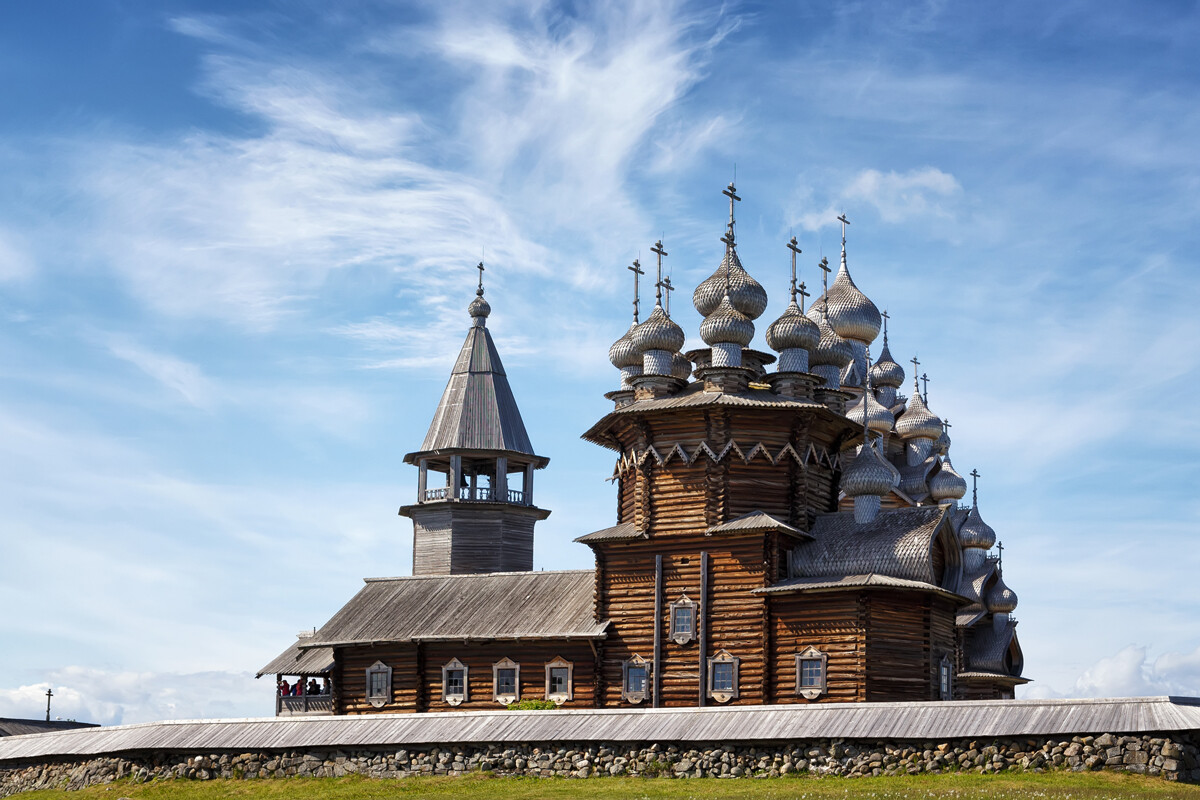
The small Kizhi Island on Lake Onega is world-famous for its complex of 18th- and 19th-century wooden buildings. The most famous building on Kizhi Island is the Transfiguration Church, built at the end of the 17th- beginning of the 18th century. Its multi-tiered roof is crowned by 22 domes. According to legend, carpenter Nestor built this church without a single nail; when he finished it, he threw his ax in the lake, so no one would repeat his creation (Today, however, you can find nails in the walls of the church from later restorations). Recently, a carved four-tiered iconostasis was restored inside.

There are legends about miracles that were performed there in the 16th century by the future abbot of the Solovetsky Monastery and Metropolitan Philip, even before his monastic tonsure. He was a hired worker of a local peasant and even caught sturgeons in Lake Onega, despite them not living in it. There are a multitude of other legends about how future saints traveled to Solovki and stopped at Kizhi on the way. Even Soviet authorities wouldn’t touch Kizhi, having immediately evaluated the cultural and historical importance of the pogost; in 1920, it was put under government protection as a memorial of architecture. In 1990, the Kizhi Pogost was added to the UNESCO World Heritage list. Kizhi also made it on the list of especially precious objects of cultural heritage of the peoples of the Russian Federation.
In 2022, it was visited by more than 360,000 people; every year, the number of tourists and pilgrims on the island only grows, despite the fact that it’s hard to reach (in summer, one has to travel by ferry, in winter – by hovercraft!).
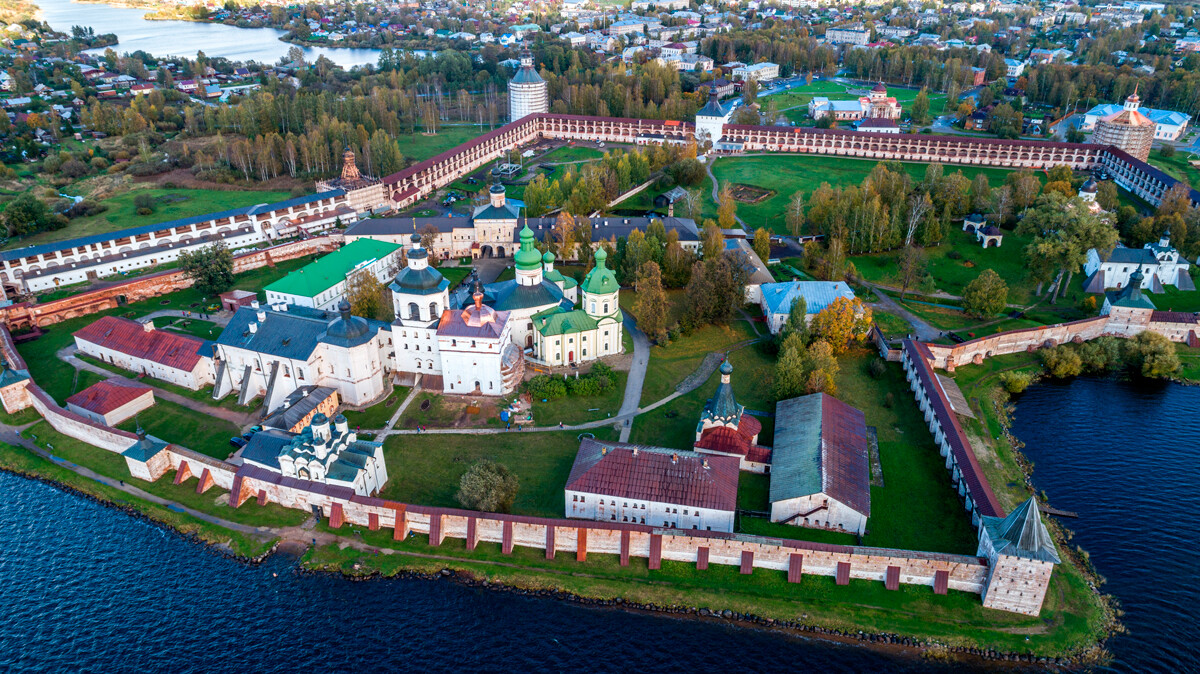
At the end of the 14th century, monk Kirill Belozersky, a student of Sergius of Radonezh, reached these northern lands by foot and founded a monastery on the bank of Lake Siverskoye, which was later named in his honor. According to legend, the place for the founding of the monastery was shown to Kirill by the Virgin Mary herself and higher powers saved him from death several times. He was sanctified with the title of ‘Venerable’ for his asceticism and his monastic feats. His relics are one of the most important sacred objects of the monastery.
The Kirillo-Belozersky Monastery, with its formidable wall, is one of the largest monasteries in Russia and in the whole of Europe. Churches of the end of the 15th century – start of the 16th century have survived and it’s one of the most important attractions in Vologda Region.
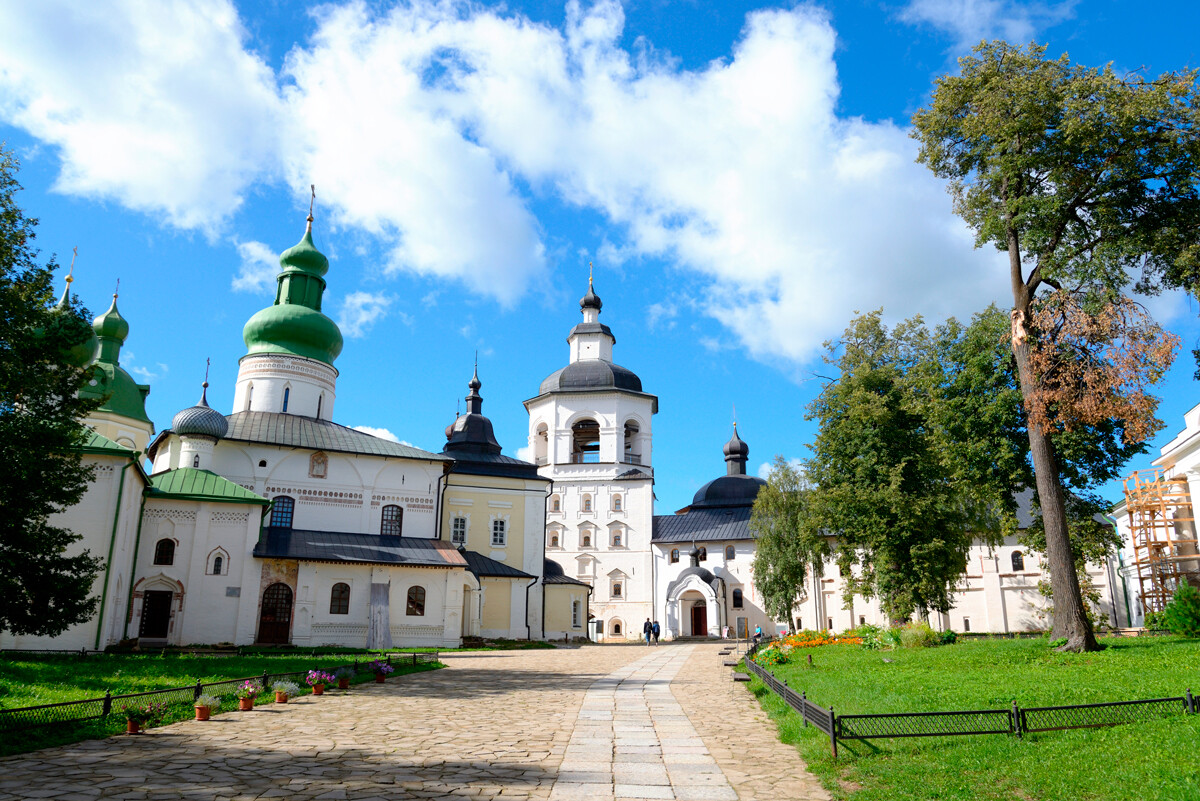
From 1997, the architectural complex of Kirillo-Belozersky Monastery was included in the state list of especially precious objects of cultural heritage of the peoples of the Russian Federation. From 2000, a branch of the museum – the Ferapontov Monastery, where unique frescoes of Dionisius of the beginning of the 16th century survived – became a UNESCO World Heritage site. Roughly 330,000 people visit the Kirillo-Belozersky Museum and Monastery annually.

The history of this monastery began in 1473. The first monk settled in the local caves and arranged a church inside in honor of the Dormition of the Mother of God holiday. In time, a whole network of caves appeared in the monastery, where monks were buried and their relics remained intact.
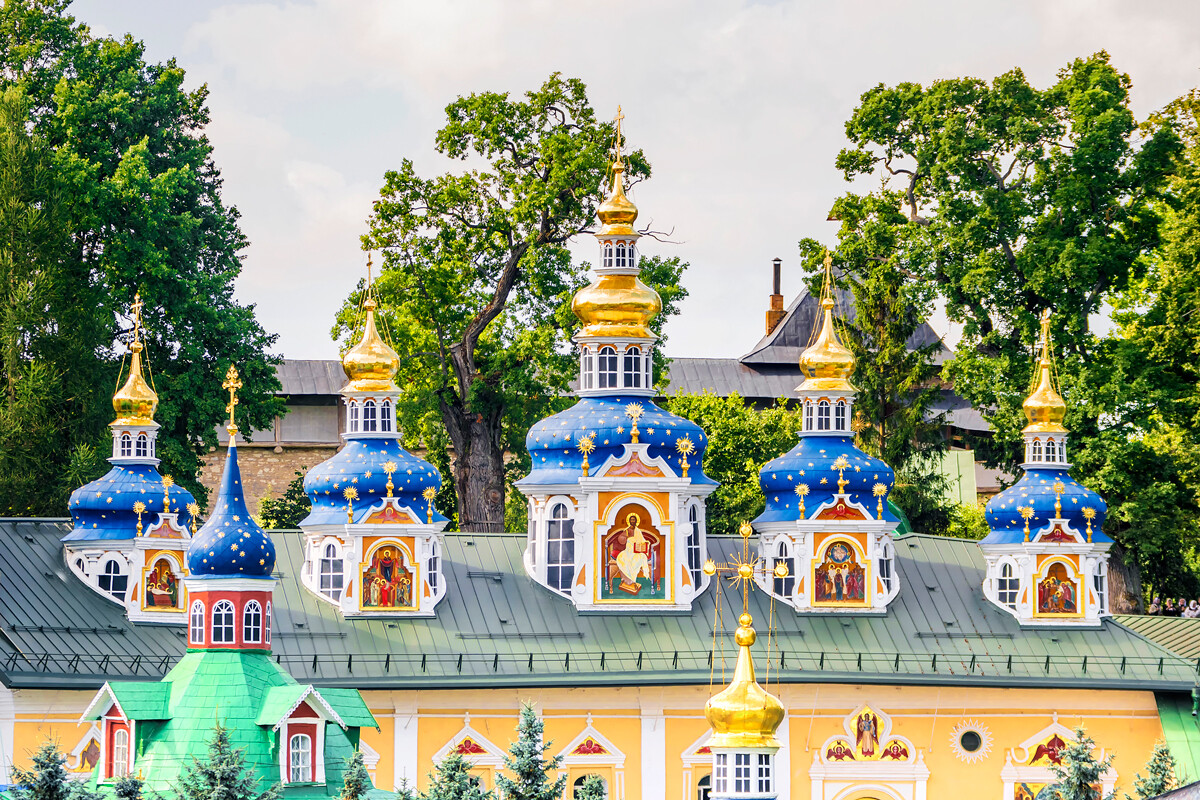
This is another one of the few monasteries that wasn’t closed in Soviet times; hence, many people who looked for a monastic way of life in the USSR strove to go there. Among them were many veterans of World War II. For about 40 years, Ioann (Krestiankin) lived there, a very venerated elder monk. Another of its famous inhabitants, who’s currently the Metropolitan of Pskov Tikhon (Shevkunov), told the story of the monastery’s everyday life and miracles in his book ‘Everyday Saints’.
In 2022, this monastery on the very border with Estonia was visited by about 230,000 tourists and pilgrims.
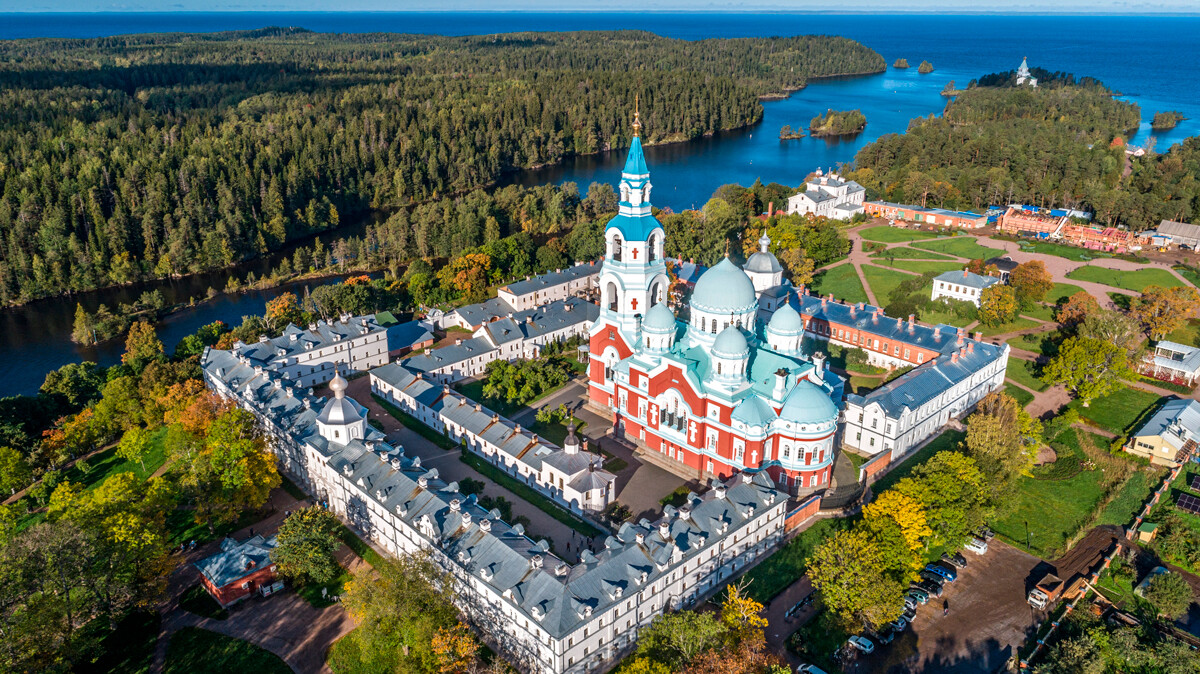
The exact founding date of the monastery on Valaam Island on Lake Ladoga is unknown; most likely, monks lived here already in the 10th century. According to legend, Apostle Andrew the First-Called himself visited this place.
The chronicled history of the monastery has been recorded from the 14th century, however, due to an attack from the Swedes, the monastery was practically abandoned and was later restored only by the decree of Peter the Great, when the emperor began the construction of St. Petersburg and the development of captured lands.
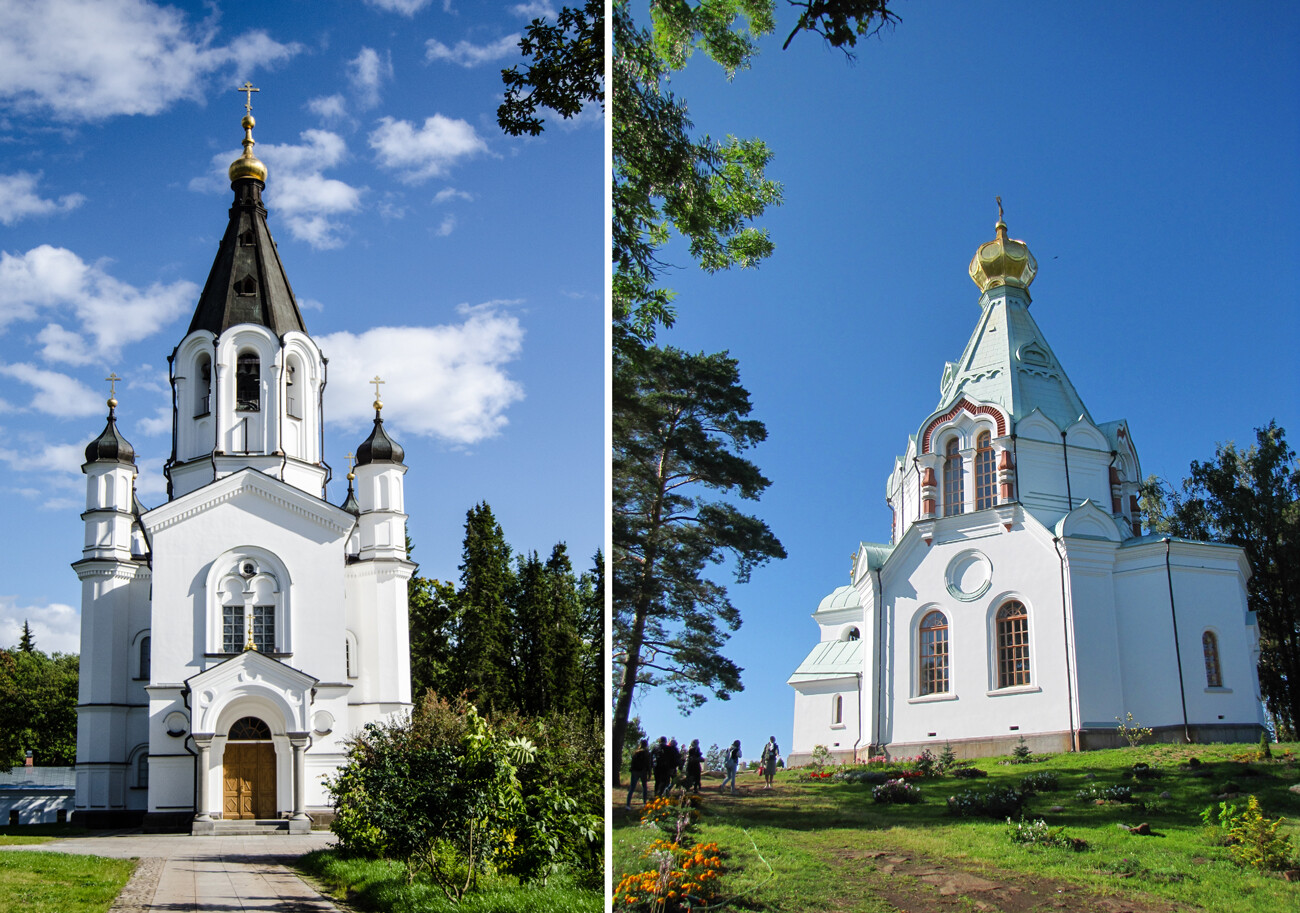
The monastery took damage over the course of the Winter War; all monks were evacuated and, during World War II, the buildings of the monastery hosted a ship’s boys school, while later – a home for the disabled. Sacred services were restored in 1989.
Valaam has always been a popular destination for pilgrimage and tourism. In 1966, the Valaam Archipelago was included in the UNESCO World Heritage list. And, although one can only reach it via a motorboat or a ‘Meteor’ speed vessel, up to 160,000 tourists and pilgrims visit it annually.
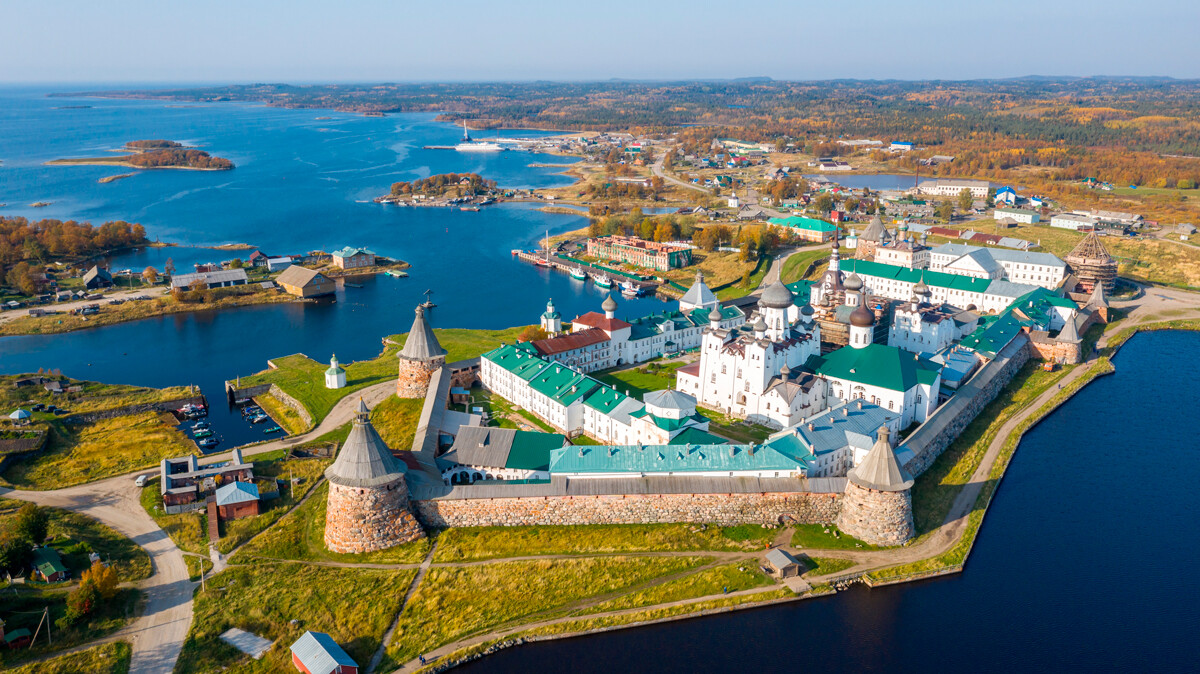
The Solovetsky Archipelago in the White Sea became infamous in the 20th century as one of the first branches of the GULAG system. Prisoners lived right in the churches of the monastery, on bunk beds stacked several tiers high. It was there where the camp’s security arranged bloody executions and firing squad killings.
After the closure of the prison, the place hosted a ship’s boys school and a museum; in 1988, a church parish was created again and services began anew. Since then, the monastery has been meticulously restored.

The monastery has a long history of spiritual and monastic feats. It began with several hermits who wandered to these remote islands. Zosimas and Savvatiy of Solovki, who founded the monastery in the 15th century, were sanctified. Their relics are one of the main sacred objects of this place. In the 17th century, the monastery was the last stronghold of the Old Believers, who resisted the church reform for almost 20 years and defended behind strong walls.
In 1992, Solovki was included in the UNESCO World Heritage list and in the state list of especially precious cultural objects of Russia. If, before the pandemic, this remote archipelago was visited by about 20,000 tourists and pilgrims annually, in 2022, this number reached the 60,000 mark. Due to the islands’ remoteness, access for tourists is open only in the warm seasons of the year.
Dear readers,
Our website and social media accounts are under threat of being restricted or banned, due to the current circumstances. So, to keep up with our latest content, simply do the following:
If using any of Russia Beyond's content, partly or in full, always provide an active hyperlink to the original material.
Subscribe
to our newsletter!
Get the week's best stories straight to your inbox